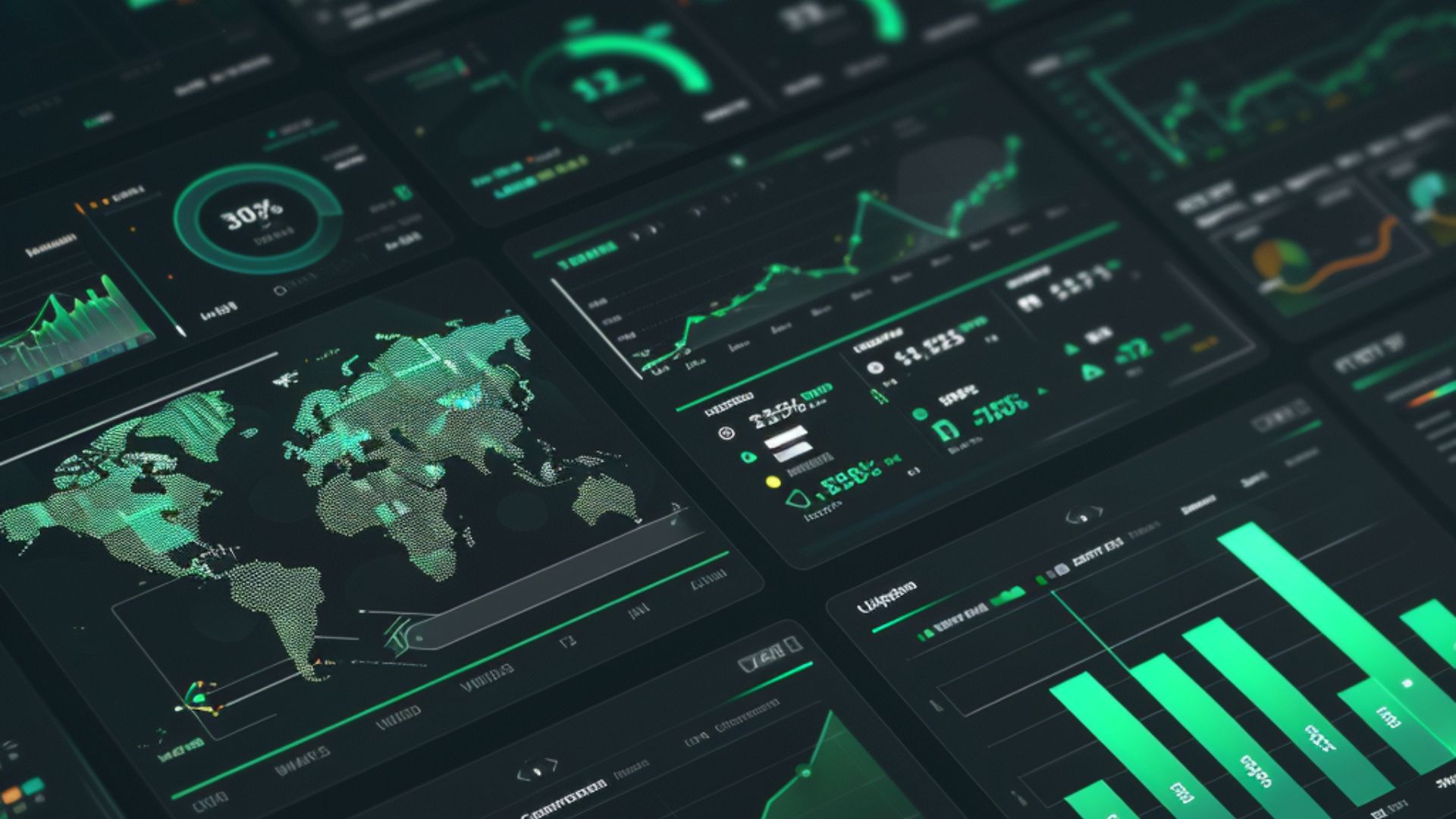A Comprehensive Guide on Definitions, Methodologies, Frameworks, Limitations, and Trends
Climate change is driving organizations worldwide to reduce greenhouse gas (GHG) emissions and embrace sustainable practices. Accurate carbon accounting is vital for regulatory compliance, risk management, and building stakeholder trust. This guide explains the differences between Scope 1, Scope 2, and Scope 3 emissions, describes methodologies to calculate your carbon footprint, reviews key frameworks and standards, discusses limitations inherent in GHG accounting, and highlights emerging trends that will shape the future of sustainability reporting.
1. Defining Carbon Emissions: Scope 1, 2, & 3
1.1 Scope 1 Emissions
Scope 1 emissions are direct GHG emissions produced by sources owned or controlled by an organization. Typical sources include:
-
Fuel combustion in company vehicles, boilers, and furnaces.
-
Fugitive emissions from industrial processes.
Real-World Example:
A manufacturing plant burning natural gas in its boilers directly releases CO₂, which is classified as Scope 1 emissions. For further details, consult the EPA’s Scopes 1, 2, and 3 Inventorying and Guidance.
1.2 Scope 2 Emissions
Scope 2 emissions are indirect emissions from the generation of purchased electricity, steam, heating, or cooling consumed by an organization. Although these emissions occur at the energy supplier’s site, they are attributed to the company using the energy.
Real-World Example:
A retail chain’s electricity use to power its stores results in Scope 2 emissions even though the emissions are produced at the power plant. More details are available via the EPA’s Guidance.
1.3 Scope 3 Emissions
Scope 3 emissions include all other indirect emissions in a company’s value chain, covering both upstream and downstream activities. Examples include:
-
Emissions from the production and transportation of purchased materials.
-
Emissions generated by customers during the use of a sold product.
Real-World Example:
An electronics manufacturer might have relatively low Scope 1 and 2 emissions but significant Scope 3 emissions from its suppliers and the energy consumed by its products over their lifetime. For a comprehensive overview, see the Greenhouse Gas Protocol’s Scope 3 Standard.
2. Methodologies for Calculating Your Carbon Footprint
Accurate carbon accounting relies on rigorous data collection, analysis, and robust calculation methods.
2.1 Data Collection and Analysis
Reliable data is the foundation of accurate emissions calculations. Organizations typically gather data from:
-
Utility bills and meter readings (for Scope 2).
-
Vehicle fuel logs and equipment records (for Scope 1).
-
Supplier reports and third-party data (for Scope 3).
Practical Tip:
Investing in an integrated data management system ensures consistency and completeness in data collection. For an overview of carbon accounting basics, the Corporate Finance Institute offers valuable resources.
2.2 Calculation Tools and Techniques
Organizations convert raw data into emissions figures using several methods:
-
Emission Factors:
Standard conversion factors translate activity data (e.g., liters of fuel burned) into GHG emissions. -
Software Solutions:
Automated platforms integrate data across various sources to streamline reporting. For example, explore reputable carbon footprint calculators. Or, you can check out Cedars Digital. -
Third-Party Verification:
Independent audits validate data quality and methodology, thereby increasing the credibility of emissions reports. Research (Downar et al., 2021) suggests that robust disclosure practices can enhance financial performance.
The table below summarizes these approaches:
| Method | Description | Advantages | Challenges |
|---|---|---|---|
| Emission Factors | Uses standard factors to convert activity data into emissions | Simple to apply; widely accepted | May not capture site-specific nuances |
| Software Solutions | Automates data integration and real-time analytics | Reduces manual errors; enhances efficiency | Requires initial technology investment |
| Third-Party Verification | Independent audits validate reported data | Increases credibility and regulatory compliance | Can be resource intensive and costly |
Table 1: Comparison of Calculation Methodologies for Carbon Emissions
3. Frameworks and Standards in Carbon Accounting
Various frameworks guide organizations in measuring and reporting GHG emissions. These standards ensure transparency, accuracy, and consistency across reporting practices.
3.1 Corporate and Local Government Standards
Organizations follow multiple standards, including:
-
Greenhouse Gas Protocol (GHG Protocol):
Divides emissions into three scopes and emphasizes principles like relevance, completeness, consistency, transparency, and accuracy. -
Task Force on Climate-related Financial Disclosures (TCFD):
Provides recommendations on governance, strategy, risk management, and metrics. -
Sustainability Accounting Standards Board (SASB), Global Reporting Initiative (GRI), and Climate Disclosure Standards Board (CDSB):
Offer sector-specific and broad sustainability reporting guidelines.
For cities and communities, protocols such as the Global Protocol for Community-Scale Greenhouse Gas Inventories and the ICLEI U.S. Community Protocol are used.
3.2 Greenhouse Gas Protocol
Developed by the World Resources Institute (WRI) and the World Business Council for Sustainable Development (WBCSD), the GHG Protocol is the most widely used standard. It distinguishes between:
-
Attributional Accounting: Allocates emissions to an organization or product over time.
-
Consequential Accounting: Measures changes in emissions due to specific actions or projects.
For more details, visit the GHG Protocol website.
3.3 ISO 14064
ISO 14064, published in 2006, provides guidelines for GHG accounting and verification:
-
ISO 14064-1: Specifies requirements for quantifying and reporting GHG emissions and removals.
-
ISO 14064-3: Offers guidance on verifying GHG assertions.
Learn more on the ISO website.
3.4 PAS 2060
PAS 2060 outlines how organizations can demonstrate carbon neutrality by including all Scope 1 and 2 emissions, plus significant Scope 3 emissions. It requires a detailed Carbon Management Plan that specifies reduction targets, timelines, and offset strategies.
3.5 EPA Greenhouse Gas Reporting Program
The U.S. EPA’s program mandates facility and supplier reporting for various emission sources, including:
-
Combustion Emissions: From fossil fuel or biomass burning.
-
Industrial Process Emissions: Such as those from cement manufacturing or petrochemicals.
Data is used to compile the annual U.S. GHG Inventory. Visit the EPA’s GHGRP page for more.
3.6 Task Force on Climate-related Financial Disclosures (TCFD)
TCFD’s recommendations focus on climate-related risks, emphasizing the need for companies to disclose all material Scope 1 and 2 emissions and, where relevant, Scope 3 emissions. For additional insights, check the TCFD website.
3.7 Protocols for Cities and Communities
Protocols such as the Global Protocol for Community-Scale Greenhouse Gas Inventories help cities determine their inventory boundaries and report emissions by sector. These methods ensure local initiatives align with broader GHG accounting standards. More information is available via ICLEI USA.
3.8 Product and Project Accounting Standards
-
Product Accounting:
Standards like ISO 14067, PAS 2050, and the GHG Protocol Product Standard focus on life cycle assessments (LCAs) to capture cradle-to-grave emissions of products. -
Project Accounting:
Standards for projects (e.g., ISO 14064 Part 2) ensure environmental integrity by addressing additionality, permanence, and double counting. Certification programs such as the Verified Carbon Standard (VERRA) and Gold Standard are widely recognized.
4. Limitations of Current GHG Accounting
Despite significant advancements, carbon accounting faces several challenges that impact the accuracy and credibility of reported emissions.
4.1 Defining Organizational Boundaries and Data Inputs
Determining which operations to include in the accounting boundary is inherently subjective. Multinational corporations, for example, struggle with whether to include emissions from subsidiaries or outsourced operations.
Actionable Insight: Establish internal protocols aligned with global standards (e.g., GHG Protocol) to ensure consistency.
4.2 Uncertainty in Emission Estimates
Uncertainty arises from assumptions made during data collection—such as the use of default emission factors—and the inherent variability in process efficiencies. A manufacturing plant might use generic factors that do not fully reflect its operations, resulting in either over- or under-estimation of actual emissions.
Actionable Insight: Implement continuous monitoring and invest in real-time data analytics to narrow these uncertainties. Regular third-party audits further enhance data reliability.
4.3 Incomplete Reporting of Scope 3 Emissions
Scope 3 emissions, often the largest share of an organization’s carbon footprint, depend on data from external partners and can be reported inconsistently. For example, only 18% of MSCI index constituents consistently report Scope 3 emissions, and many high-rate emitters either under-report or omit them.
Actionable Insight: Collaborate with suppliers and value chain partners to improve data quality and set clear reporting guidelines. Adoption of standardized metrics across the value chain is critical.
4.4 Double Counting of Emissions and Benefits
Double counting occurs when emissions are reported by multiple entities or when the same reductions are claimed more than once. In corporate portfolios, double counting can account for 30–40% of reported emissions, distorting true performance and undermining confidence in mitigation efforts.
Actionable Insight: Use standardized accounting methodologies and engage independent auditors to identify and eliminate overlaps.
4.5 Overestimation of Climate Benefits
Inaccuracies often arise when companies overstate the benefits of their products or projects, neglecting full life cycle assessments or using selective data to skew results. This practice can mislead investors and policymakers, ultimately hindering effective decision making.
Actionable Insight: Conduct comprehensive life cycle assessments (LCAs) and benchmark against industry standards to ensure realistic estimations of climate benefits.
4.6 Implications for Carbon Markets and Offsets
Carbon offset schemes face challenges including ensuring additionality, permanence, and avoiding double counting of credits. Inaccuracies in these areas can inflate the perceived impact of emissions reductions and disincentivize market participation.
Actionable Insight: Strengthen certification programs and verification standards to ensure the environmental integrity of offsets, thereby maintaining market trust.
5. Current Trends Shaping the Future of Carbon Accounting
The landscape of carbon accounting is evolving in response to regulatory pressures, technological innovations, and changing investor expectations. Key trends include:
5.1 Standards Alignment and Interoperability
Efforts are underway to harmonize diverse accounting standards. The International Sustainability Standards Board (ISSB) is working on a global baseline for sustainability disclosure, which will improve interoperability among frameworks such as the EU Corporate Sustainability Reporting Directive (CSRD) and SEC requirements.
Example: Greater alignment across standards ensures that data is comparable across international operations, reducing discrepancies in reporting.
5.2 Convergence of Voluntary and Regulatory Requirements
Increasingly, voluntary standards are being integrated into regulatory frameworks. Voluntary offset standards are now part of systems like California’s Emission Trading System and CORSIA for international aviation.
Example: This convergence improves reporting consistency and strengthens the market for carbon credits.
5.3 Focus on Net Zero Goals
Aligning GHG accounting with net zero targets is paramount. The Science Based Targets initiative (SBTi) has introduced a net zero corporate standard requiring both short-term and long-term reduction targets. Additionally, new standards such as ISO 14068 are emerging to support net zero ambitions.
Example: Companies adopting these standards can transparently track progress toward their net zero commitments, driving long-term sustainability.
5.4 Improved Management of Scope 3 Emissions
Given that Scope 3 emissions often represent the largest share of emissions, significant effort is directed toward better measurement and reduction. Collaborative initiatives between companies and their suppliers, as well as enhanced data collection methods, are vital.
Example: By establishing clear Scope 3 targets, companies can address indirect emissions more effectively, a critical area for both operational improvements and investor risk assessments.
5.5 Technological Innovations in Data Integration
Emerging technologies such as AI, IoT, and blockchain are revolutionizing emissions tracking. These tools facilitate real-time data collection and robust third-party verification, greatly reducing manual errors.
Example: Adoption of AI-driven analytics not only streamlines reporting but also provides actionable insights to drive further emissions reductions.
5.6 Impact on Financial Markets and Investment Decisions
Accurate, transparent carbon accounting is increasingly influencing investor decisions. Enhanced disclosure practices allow investors to assess climate-related risks and opportunities more reliably, driving market confidence and potentially reducing investment risks.
Example: Firms with robust GHG reporting are more likely to attract sustainable investment, creating a competitive advantage in the marketplace.
The following table summarizes these trends and their potential impacts:
| Trend | Description | Impact on Businesses and Investors | Future Outlook |
|---|---|---|---|
| Standards Alignment | Harmonization of diverse reporting standards | Consistent and comparable data; facilitates cross-border analysis | Enhanced global transparency and regulatory compliance |
| Convergence of Voluntary & Regulatory Requirements | Integration of voluntary standards into mandatory frameworks | Improved consistency in reporting; stronger market trust | Continued convergence leading to comprehensive global standards |
| Net Zero Integration | Alignment of carbon accounting with net zero targets | Stronger long-term sustainability strategies; clear milestones | Increased adoption of net zero commitments and technological innovations |
| Enhanced Scope 3 Management | Improved measurement and reduction strategies for Scope 3 emissions | Better risk assessment; enhanced supply chain collaboration | Greater industry collaboration and refined methodologies |
| Technological Advancements | Use of AI, IoT, and blockchain for real-time data integration | Reduced errors; increased transparency and actionable insights | Widespread adoption transforming reporting practices |
| Investor-Focused Reporting | Enhanced GHG disclosure for informed investment decisions | Lower investment risk; improved market confidence | Increased investor engagement driving sustainability trends |
Table 2: Current Trends in Carbon Accounting and Their Implications
6. Case Studies: Industry Leaders in Carbon Accounting
Examining the practices of leading companies can provide practical insights into effective carbon accounting strategies.
6.1 Microsoft: Leveraging AI and Cloud Analytics
Microsoft utilizes artificial intelligence and cloud-based analytics to monitor real-time emissions data, identify inefficiencies, and reduce both Scope 1 and 2 emissions. Their continuous improvement process, backed by rigorous third-party verification, has resulted in a significant reduction in emissions intensity.
Insight: Microsoft’s approach demonstrates how advanced technology can drive meaningful sustainability improvements.
6.2 Unilever: Optimizing Supply Chain Emissions
Unilever has taken proactive measures to address Scope 3 emissions by collaborating closely with suppliers. Through detailed audits, shared sustainability initiatives, and setting clear reduction targets, Unilever has achieved measurable reductions in its indirect emissions.
Insight: Effective supply chain engagement is essential for managing the complex challenges associated with Scope 3 emissions.
6.3 Walmart: Advancing Energy Efficiency
Walmart’s strategy centers on upgrading energy efficiency and investing in renewable energy sources across its global operations. This dual approach not only reduces direct emissions (Scope 1) but also lowers energy consumption-related emissions (Scope 2), resulting in significant cost savings and environmental benefits.
Insight: Walmart’s success underscores the importance of integrating sustainability into core business operations for both financial and environmental gains.
The following table summarizes the key strategies and outcomes of these industry leaders:
| Company | Focus Area | Key Strategies | Outcomes |
|---|---|---|---|
| Microsoft | Scope 1 & Scope 2 | AI analytics, cloud integration, continuous monitoring | Approximately 30% reduction in emissions intensity |
| Unilever | Scope 3 | Supplier engagement, comprehensive audits, sustainability programs | Significant reduction in supply chain emissions |
| Walmart | Scope 1 & Scope 2 | Energy efficiency upgrades, renewable energy investments | Notable cost savings and substantial emission reductions |
Table 3: Case Studies of Major Companies in Carbon Emissions Management
7. Future Implications and Industry Shifts
The evolution of carbon accounting is set to reshape both corporate strategies and financial markets. Key future implications include:
7.1 Enhanced Data Quality and Integration
Improved data collection techniques and real-time analytics will reduce uncertainties in emissions estimates. Better integration of disparate data sources will lead to more precise and actionable insights, enabling targeted emissions reduction efforts.
7.2 Global Standardization
Ongoing harmonization of global standards will simplify cross-border reporting and enhance comparability. A unified framework will benefit multinational organizations and foster greater international cooperation on climate goals.
7.3 Supply Chain Collaboration
Managing Scope 3 emissions will necessitate deeper collaboration across value chains. Companies will increasingly work with suppliers and customers to ensure data quality, set reduction targets, and implement best practices across the entire supply chain.
7.4 Integration into Financial Decision-Making
As investors demand transparent and reliable emissions data, sustainability metrics will become integral to financial planning. Enhanced carbon reporting will drive improved risk management, influence investment decisions, and potentially lead to lower capital costs for companies with robust sustainability practices.
7.5 Verification and Assurance Advances
Ongoing innovations in third-party verification—supported by technology such as blockchain—will further enhance the reliability of carbon accounting. More rigorous auditing standards will reinforce market confidence in reported emissions data.
8. Conclusion
Accurate carbon accounting is critical for achieving sustainability goals, managing regulatory risks, and building investor trust. By understanding and calculating Scope 1, 2, and 3 emissions, organizations can make informed decisions that drive meaningful emissions reductions across their operations and supply chains. This comprehensive guide has detailed key definitions, methodologies, frameworks, limitations, and current trends in carbon accounting, offering actionable insights for organizations at all stages of their sustainability journey.
As businesses continue to embrace technological advancements and global standardization, the future of carbon accounting looks promising. Despite ongoing challenges such as data uncertainty and double counting, proactive measures—ranging from advanced analytics to enhanced supply chain collaboration—are paving the way for more accurate and actionable GHG reporting. In turn, this progress not only supports corporate sustainability efforts but also reinforces market confidence and fosters a more resilient, low-carbon economy.
9. References
-
Downar, B., Ernstberger, J., Reichelstein, S., Schwenen, S., & Zaklan, A. (2021). The impact of carbon disclosure mandates on emissions and financial operating performance. Review of Accounting Studies, 26(3), 1137–1175. https://doi.org/10.1007/s11142-021-09611-x
-
Hills, K. (2022, April 20). The Basics of Carbon Markets and Trends: Something to Keep an Eye On | CSANR | Washington State University. Retrieved March 8, 2023, from https://www.wsu.edu/csanr
-
Kim, J. (n.d.). Al Gore helped launch a global emissions tracker that keeps big polluters honest. NPR. Retrieved January 5, 2023, from https://www.npr.org
-
“Briefing: What are Scope 3 emissions?”. (2019, February 25). Retrieved December 19, 2023, from https://www.cdp.net/en/articles/media/briefing-what-are-scope-3-emissions
-
“Carbon Accounting”. (n.d.). Corporate Finance Institute. Retrieved January 6, 2023, from https://corporatefinanceinstitute.com/resources/esg/carbon-accounting/
-
Greenhouse Gas Protocol. (2023, May 2). Greenhouse Gas Protocol. World Resources Institute. Retrieved July 22, 2023, from https://ghgprotocol.org
-
ISO. (n.d.). ISO 14064: Greenhouse Gas Accounting and Verification. Retrieved from https://www.iso.org/iso-14064-environmental-management.html
-
Patel, S. (2021, June 23). CDP reporting: What it is, how it creates value, and how to start. Conservice ESG. Retrieved December 15, 2022, from https://www.conservice.com/esg
-
Segal, M. (2021, September 23). SBTi Says 80% of Company Climate Commitments are not Science-Based. ESG Today. Retrieved December 15, 2022, from https://www.esgtoday.com
-
US EPA, OAR. (2022, November 28). Market Developments Around Climate-Related Financial Disclosures. EPA.gov. Retrieved December 15, 2022, from https://www.epa.gov
Additional content on frameworks, limitations, and trends has been synthesized from multiple industry sources and academic literature.




